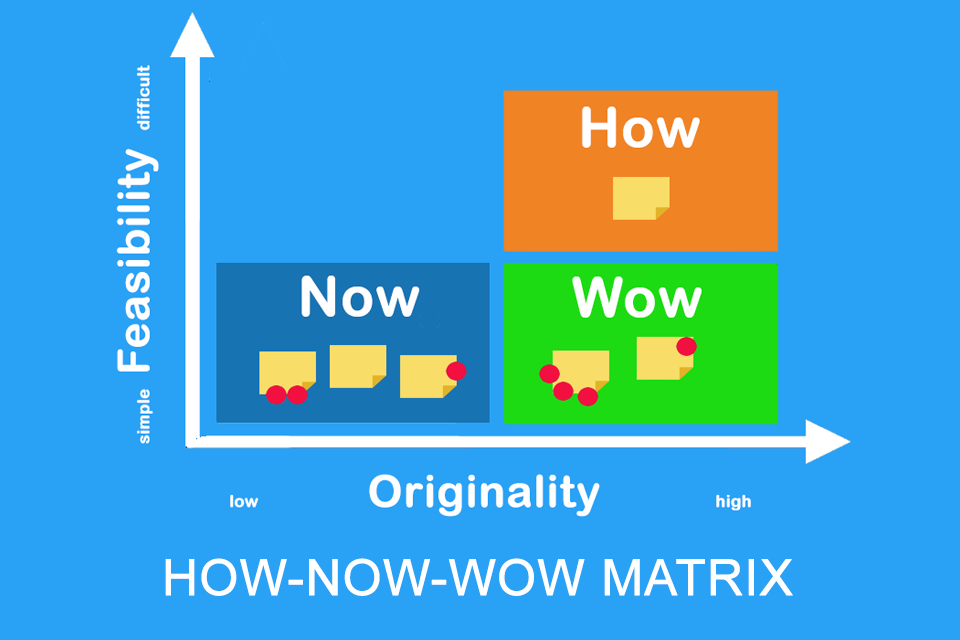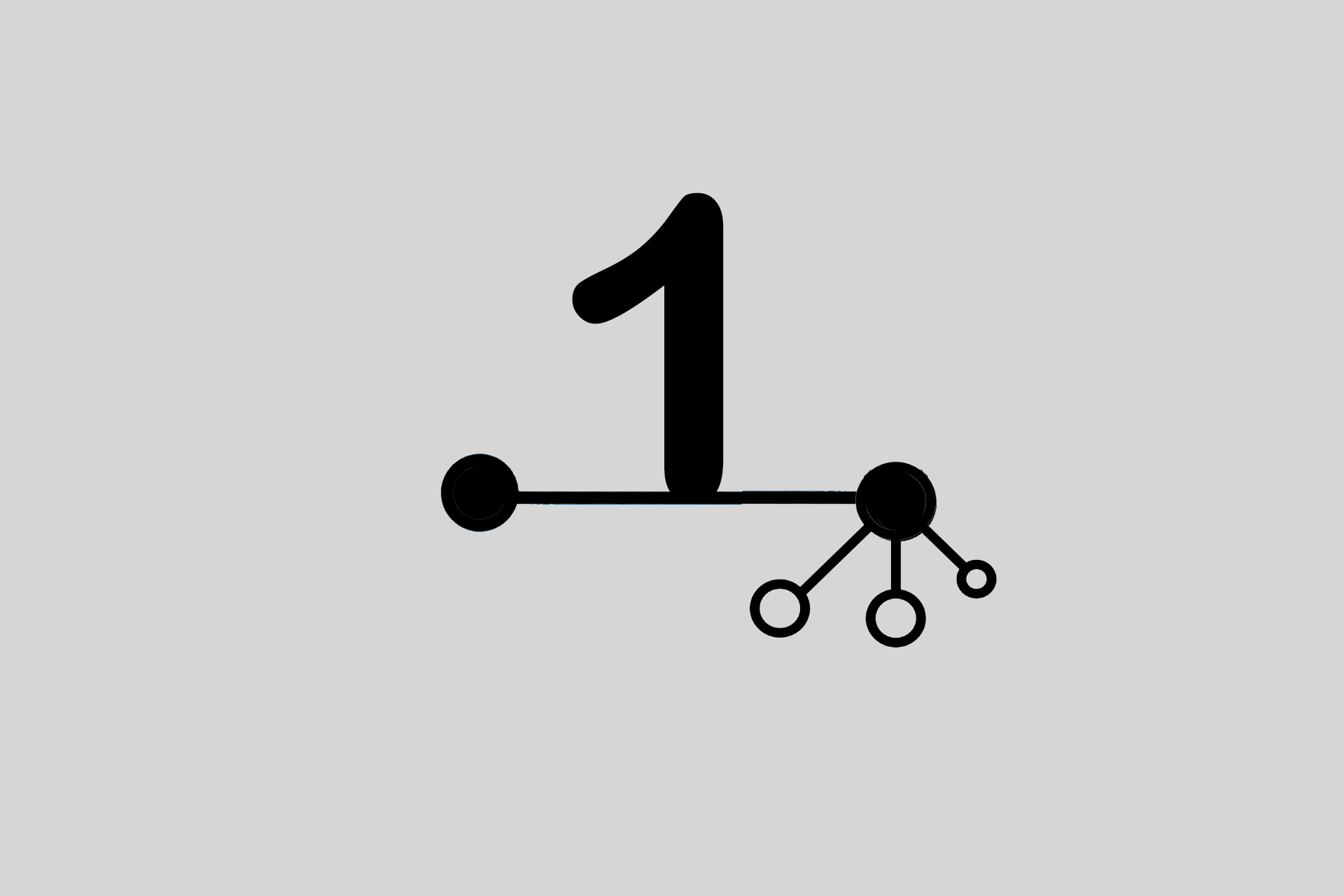What is a How-Now-Wow Matrix?
Smartpedia: The How-Now-Wow Matrix is a tool for selecting ideas categorised according to their originality and feasibility.
How-Now-Wow Matrix – the categorisation of ideas
When organisations want to develop new, creative ideas, they often use brainstorming. “Thinking outside the box” is a credo that is often propagated in such situations. However, when it comes to implementing the identified ideas, organisations – and thus the people who work in and for these organisations – often opt for the ideas that seem most familiar to them. There is a solution to this “creative paradox”: the How-Now-Wow Matrix.
The How-Now-Wow Matrix is a tool for selecting ideas based on two concrete parameters:
- Originality and
- feasibility.
Ideally, these parameters provide an improved structure for the selection of ideas. Instead of “lowest common denominator” ideas, “wow” ideas come into focus. The selection is visualised by means of a matrix:
- How stands for ideas that are innovative but whose realisation is not immediately obvious. Ideas that are assigned to the How sector cannot be implemented directly, but they could be implemented in the future – with more planning and knowledge.
- Now stands for relatively simple, “normal”, obvious ideas that are easy to implement and are very likely to work well.
- Wow stands for new, particularly creative, original ideas that are also easy to implement. Finding these kinds of ideas is particularly desirable.
The application of the How-Now-Wow Matrix
The application and use of the How-Now-Wow Matrix is very simple and intuitive. It immediately follows a brainstorming, starbursting, brainwriting or premortem:
- Grouping of ideas: To get an overview, it is useful to group similar ideas together, delete duplicates and eliminate statements that do not match the topic.
- Positioning the ideas in the matrix: For this it is important to clarify what “feasibility” or “ease of implementation” mean. Is the classification based on costs, on available staff, on skills? The same applies to “originality”. Is it an innovative idea that has never been thought of before, or something that has never been tried in the organisation? Only after the explanations of the terms does the assignment of the ideas into the categories How, Now, Wow begin. This categorisation can be accompanied by a discussion about discrepancies, but the focus should always be on a common agreement on a categorisation.
- Voting on the ideas: All participants distribute points (one or more depending on the agreement) and thus determine which ideas should be prioritised. In sum, a common picture emerges and an order for implementing the ideas identified.
The duration of a How-Now-Wow session depends, of course, on the size of the group and, if applicable, on the form of collaboration (the format can also be run online, for example). The actual effort for the implementation, however, only arises subsequently; for Now and Wow ideas, implementation steps need to be planned and for How ideas, further rounds of discussion and evaluation may be required.
Impulse to discuss
Is it possible to objectively assess ideas – for example, on the basis of the above-mentioned parameters of originality and feasibility? And is this objectivity important at all?
Notes:
If you like the article or would like to discuss it, please feel free to share it in your network. And if you have any comments, please do not hesitate to send us a message.
There is an ‘empty’ sector in the matrix. This arises because organisations rarely want to implement unoriginal ideas that are difficult to realise. However, organisations could use this area to ‘park’ suggestions that they consider unfeasible after thorough discussion. This area thus serves as proof of ideas that have been considered. Alternatively, the matrix can be expanded to include a ‘Ciao’ field; in this case, it is referred to as the How-Now-Wow-Ciao Matrix.
The Kano Model, which examines user satisfaction in relation to product characteristics, also knows a “wow”. It stands for enthusiasm factors that turn customers into voluntary brand ambassadors.
Here you can find an video about the How-Now-Wow Matrix.
And here you will find additional information from the t2informatik Blog:



